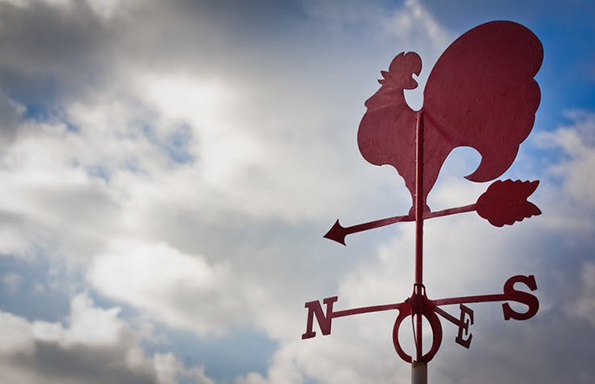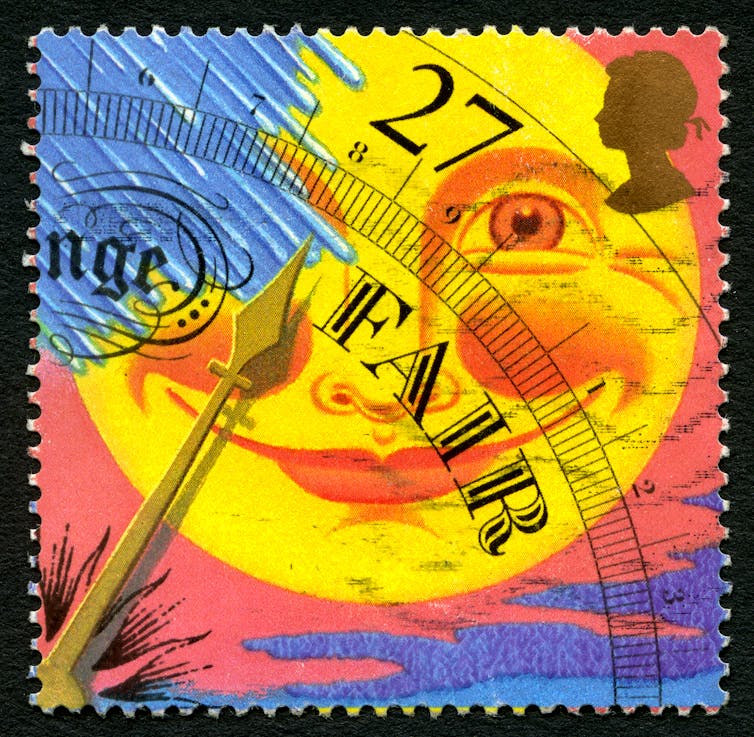What was hot before 1976? A trip down British weather’s memory lane
Published on

Thomas Webb is a Postdoctoral Research Associate in the University of Liverpool's Department of History
Alongside the winters of 1947 and 1962-3, the summer of 1976 is part of Britain’s cultural weather memory, when temperatures reached 32°C or higher for 15 consecutive days and triggered one of the most severe droughts for the past 150 years. The highest recorded June temperature in the UK was set on the 28th that year, when Southampton sweated in 35.6°C – a record which still stands.
The summer of 1976 has become part of a national narrative and a source of shared positive nostalgia, which has been used as a benchmark for comprehending extended periods of hot weather ever since. The retelling of this national weather story in popular culture is important. It shapes individual memories of the event and influences how individuals construct a personal understanding of their local climate (whether they have a personal memory of this event or not) during exceptional weather.
But what came before 1976? What heatwaves – now largely long forgotten – did people use as a benchmark for comparing hot weather conditions?
‘Day hot’ for Victorian farmers
These questions can be investigated through the use of the online and freely accessible TEMPEST database, the product of extensive archival research by scholars from the Universities of Liverpool, Nottingham, Glasgow, and Aberystwyth. TEMPEST contains more than 18,000 records relating to extreme weather events in Britain spanning the past 500 years. Its collection of diary entries, letters, parish registers and newspaper reports provides valuable insights into how people experienced and responded to unusual and extreme weather.
Searching for heatwaves on TEMPEST reveals that extended periods of hot weather weren’t frequent, but were not necessarily uncommon either. People often made comparisons to previous heatwaves in order to contextualise the hot weather conditions around them.

These comparisons were measured in a number of ways, ranging from contrasting record temperatures to anecdotes rooted in memories, interests, locations and occupations. Some of the comparisons were made in relation to agriculture and farming practices – for instance, during the dry and hot summer of 1826, William Herbert from Great Bowden, Leicestershire wrote in his diary:
21st Aug – The drought is so great that Mr Clarke’s beast were obliged to be brought yesterday from Greenholm to Gunsbrook to be watered, that Brook being dry for nearly a mile together, day hot.22nd Aug – heard old Joseph Charlton say last night that he remembered the dry summer of 1762, he & his mother took 2 cows to Harboro’ Fair and were bid only 20s for the two, his father took a sow & pigs for which we not bid anything … day hot.
For this Leicestershire farming community, the hot and dry spell of 1826 was benchmarked against similar conditions in 1762. Their severity was remembered in personal terms through the impact the weather had on watering and selling livestock.
Britain’s deadly heat waves
The 1826 drought followed the similarly, and often overlooked, hot summer of 1825. According to Orion’s British Almanac, one of several 19th-century collections of extraordinary weather events and predictions, ten men and 16 horses died under the heat during a hot stretch in July.
In a letter from John Thomas Swanick in Derby to G. Symons of London, Swanick observed that temperatures in July 1825 were as high as “the three hot days which occurred on the 12th, 13th and 14th days of July 1808 when so many persons died by the effects of it and taking cold liquids.” The death toll from a heat wave in 1825 could be linked to a deadly hot weather event 17 years earlier, as a means of categorising the severity of weather over time.
Later in the 19th century and into the early 20th century, it becomes apparent that historical “benchmark” heatwaves replaced one another. This was especially the case when historical heatwaves went out of living memory.
In the Baptisms Register for Thorpe Malsor, Northamptonshire, the summer of 1868 was recorded as a “very dry summer – great drought and scarcity of water in many places round … Old people in this village report that 1818 & 1826 were similar years”.
Likewise, a journalist in 1911 reported, in regards to consistent days reaching 80 degrees Fahrenheit:
So far, in 1911 there have been 35 such days as against 40 in the historic summer of 1868, the only one in the lifetime of people now living which can compare with the present season.
The summer of 1976 has not passed out of living memory, but in 50 years time it may be summer 2018 that we will be looking back on as our benchmark. As these historical examples suggest, these comparisons will not just be made in regards to temperature records, but will also be measured by other connected events that shape personal and collective weather memories of 2018 – such as the 30°C heat in the UK that accompanied England’s victory over Sweden in the World Cup quarter-finals.
Climate change means that we are likely to see more extreme weather of all kinds. As the signature of climate change manifests in our weather, its growing cultural and political importance will frame the ways in which we look back on the heatwave of 2018 and the weather events that follow.
In the effort to contextualise the weather extremes of the future, our best resources are the stories that make up our shared weather memory of the past.
This article was originally published on The Conversation. Read the original article.